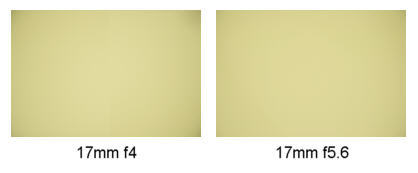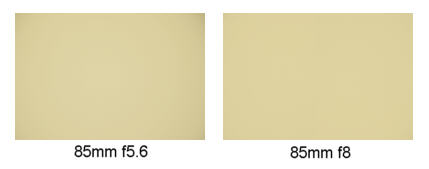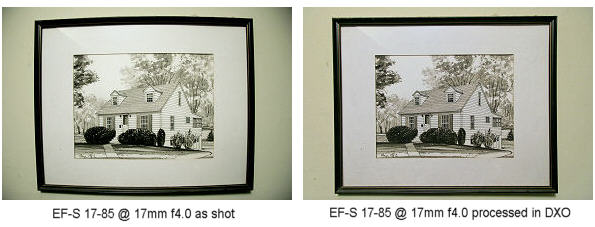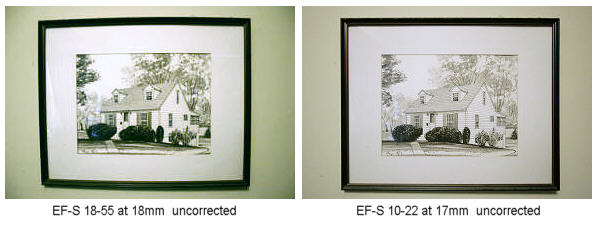
|
Canon EF-S 17-85/4-5.6 IS USM Review
FocusingAs expected from any lens using Canon's ring USM focusing motor, focus is both fast and silent. I measured the time to go from closest focus (0.35m) to infinity to be around 315 milliseconds (0.315 seconds). The total cycle time when no focus was found (lens cap on!) from infinity to close focus, pause, and back to infinity was 1 second. The EF-S 18-55 has a similar focus time from close focus to infinity, but a longer cycle time (1.375 seconds) and is significantly more noisy. Here are two audio files of focus noise with the lens focusing from infinity to close focus and back to infinity (lens cap on). These were taken with the microphone actually on the lens in order to pick up the sound of the USM motor! Under normal shooting conditions it's hard to hear the USM motor.
VignettingLike all lenses there's some visible vignetting when shooting wide open, but it's not too bad. It shows up most when shooting a totally uniform target, such as a grey card or a painted wall. Here are a few example frames:
As you can see, at 17mm there's some darkening in the corners, but it's nothing that a tweak in PhotoShop, DxO or other image editor can't take care of.
At 85mm vignetting is less and is gone when stopped down a stop to f8. DistortionThe barrel distortion at 17mm is definitely noticeable and could be a problem if you're shooting architecture and printing directly from the camera. However barrel distortion is easily compensated for in most image editors, so if you're downloading to a PC and editing the images before printing, distortion isn't a big deal. Below is an example of distortion correction:
The leftmost image is as shot, the rightmost image is after correction using DxO. You can see that both distortion and vignetting have been eliminated. Slight color differences result from the fact that I chose to set a white point in DxO. Just for comparison, here are similar shots using a Canon EF-S 18-55/3.5-5.6 lens at 18mm and a Canon EF-S 10-22/3.5-4.5 at 17mm.
You can see that the EF-S 18-55 and 17-85 have a similar amount of barrel distortion, but that the EF-S 10-22 has almost none. This is likely because of two factors. First the 10-22 is only a 2.2x zoom, whereas the 18-55 is a 3x and the 17-85 is a 5x. The wider the zoom range the more difficult it is to fully correct the lens at all settings. Secondly most zooms show maximum barrel distortion at their widest setting. Both the 17-85 and 18-55 are set to their widest, while the 10-22 is set to mid range (though I should add that the EF-S 10-22 is very well corrected for distortion, even at the 10mm setting). Distortion of the EF-S 17-85/3.5-5.6 IS USM at longer focal length settings, such as 35mm and 80mm, was low as can be seen in the following images:
NEXT - Part III - Image Stabilization, Macro and Flare
© Copyright Bob Atkins All Rights Reserved |
|





